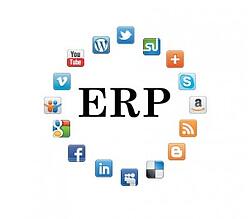The rise of new social media platforms such as Facebook, LinkedIn, Twitter, Tumblr and many more create an evolution in every aspect of the world, including business. ERP is not an exception of social media tide sweeping across the technology world. Today, the software applications will be expected to have the ability to provide users the communication and interaction needed within the organisation the way they’ve done in Facebook and other platforms.
such as Facebook, LinkedIn, Twitter, Tumblr and many more create an evolution in every aspect of the world, including business. ERP is not an exception of social media tide sweeping across the technology world. Today, the software applications will be expected to have the ability to provide users the communication and interaction needed within the organisation the way they’ve done in Facebook and other platforms.
The marketplace is changing quickly as the demand for information is more critical than ever. There are notifications, data of changes, announcements and many, many more information are made in one hour that organisational leaders need to know to clarify the path their company is heading to.
For example, order entry data can be view in spreadsheet from the production demand forecasting system, and you need to know the production plan, which may be stored in the routing systems to plan work through many production operations.
A business may have thousands of work centres and operations. But do the two systems match? Of course not! It’ll take a very long time to find and pick the information you need in many system available. Social ERP comes in as a solution for this situation.
Read more: Big Data in Manufacturing
What is social ERP?
In simplest term, social ERP is an integrated software system that organises customers, employees, suppliers and partners of a company under the same umbrella. It has all traditional features of an ERP system with additional features of social collaboration within the system itself, allows users to easily discuss, share and connect with each other when necessary.
Why manufacturing collaboration is different?
An Aberdeen report in 2013 stated that: “Organisations that have implemented social ERP saw over twice the improvement in profit margins over the past two years than organisations that have not implemented social ERP.”
This is not to say that the success of one organisation depends on the implementation of a social ERP system, but to indicate that social ERP system enables organisations to plan, work and meet dynamic challenges more effectively and become more profitable.
In another report from Aberdeen, top manufacturing executives continue to recognise the importance of manufacturing collaboration. Specifically, 43% executives expect improved collaboration to yield shorter time-to-market new products, while 29% aim for improving innovation process and 26% expect to reduce operational costs.
Read more: Collaboration Challenges and How to Overcome with Social ERP
Today, as manufacturers are struggled with the lack of skilled labours, while still have to grow without costing more for employments, they need to take advantage of shared dialogues and effective collaboration. Evidently, a highly collaborated manufacturer will have the ability to:
- Create a big picture of what is going on in every process to make right decision at the right time.
- Access to all data in anywhere in the world in real-time.
- Create good work relationship throughout the organisation and thus increase the trust and credibility in shared data in the system.
- Notice critical activities and who are subscribing to that and have work arranged more efficiently.
- Enhance organisational culture and employee relationship.
Conclusion
The qualities that lead to success in manufacturing revolve around rapid mastery of the combination of human judgement, precision engineering and financial accuracy, all united in a highly synchronised framework focused on business goals.
All manufacturers need a richer, deeper collaboration architecture that incorporates broader business functions than newly popular social collaboration tools usually provide. However, the collaboration processes need to be workflow, not an afterthought. In the next posts, we will going to discuss to detail about collaboration process and how to pull it all together to achieve highest performance.
Read our full report here.

 English
English  Vietnamese
Vietnamese 

